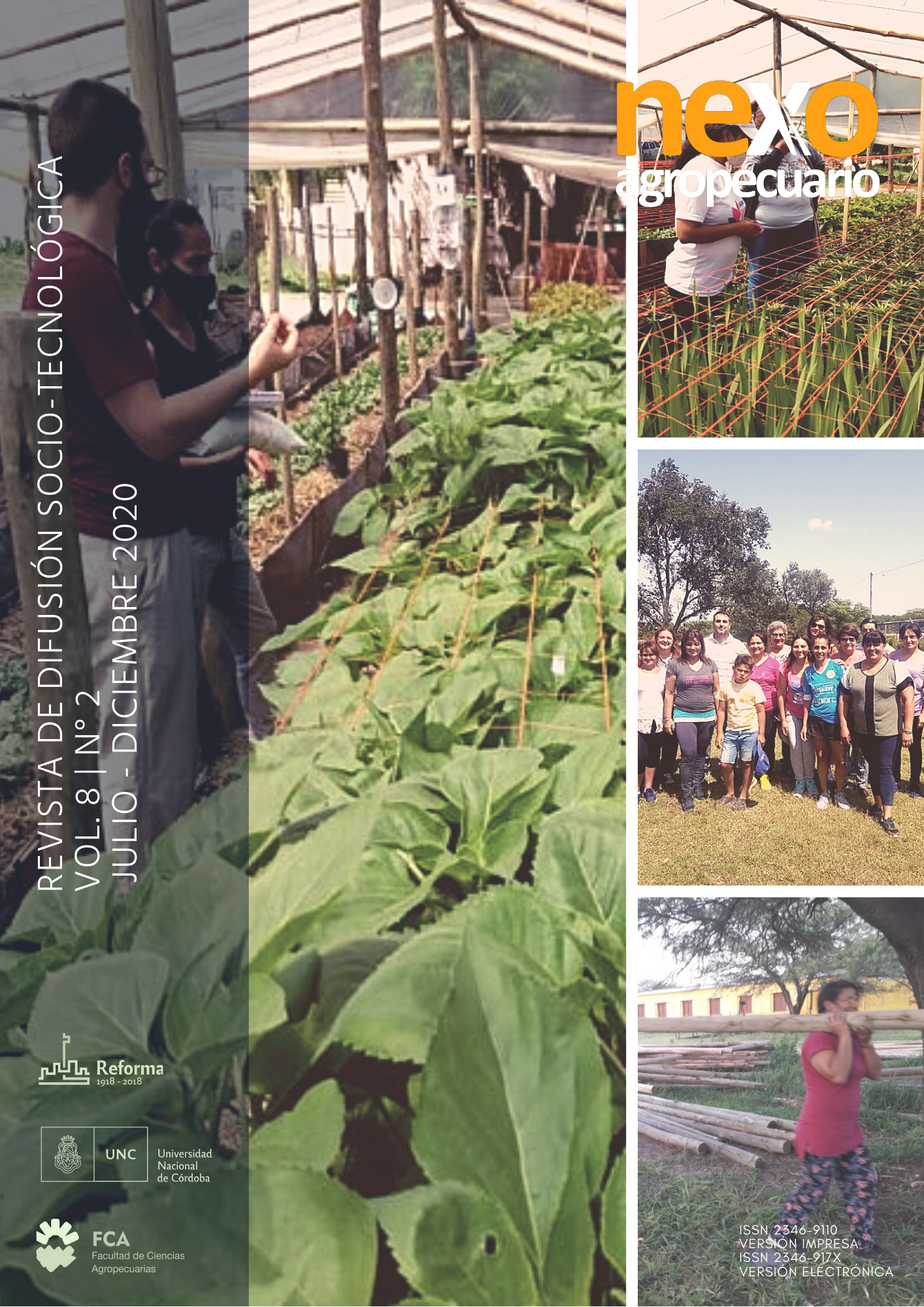Español
Keywords:
Estrategia de enseñanza, Aprendizaje activo, Flipped classroomAbstract
As an alternative to traditional teaching methodologies, the flipped classroom emerges as a comprehensive approach that encourages the autonomous learning of students, having access to content through virtual environments and then applying them in diverse and participatory activities. In this work it is proposed to assess the implementation of the flipped classroom model for the virtual dictation of the curricular space “Fisicoquímica” (Licenciatura en Agroalimentos, Facultad de Ciencias Agropecuarias). Initially, the curricular space was planned to be carried out through an flipped classroom approach, taking advantage of virtual environments from a learning model focused on the active construction of knowledge by students. Of the total number of enrolled students, 62.3% got the direct promotion and 4.1% acquired status as regular student. Considering that it was the first time the subject was taught, without a history of face-to-face dictation, it could be said that the results were favorable since the majority of the students demonstrated a high adherence to the proposed activities, despite the vicissitudes presented by the difficulty of accessing the internet. This situation must be considered when thinking about the planning of a subject from virtuality.
References
Cabero Almenara J, Llorente Cejudo MC. 2015. Tecnologías de la información y la comunicación (TIC): escenarios formativos y teorías del aprendizaje. Revista Lasallista de Investigación12(2):186-193
Cayo-Rojas CF, Agramonte-Rosell RC. 2020. Desafíos de la educación virtual en Odontología en tiempos de pandemia COVID-19. Revista Cubana de Estomatolología 57(3): e3341.
Collazos CA, Mendoza J. 2006. Cómo aprovechar el “aprendizaje colaborativo” en el aula. Educación y educadores 9(2): 61-76.
Day LJ. 2018. A gross anatomy flipped classroom effects performance, retention, and higher‐level thinking in lower performing students. Anatomical sciences education 11(6): 565-574.
Educause Learning Initiative. 2012. 7 Things you should know about Flipped Classrooms. EDUCAUSE Creative Commons. Disponible en https://www.educause.edu/ir/library/pdf/ELI7081.pdf
King AM, Mayer C, Barrie M, Greenberger S, Way DP. 2018. Replacing lectures with small groups: the impact of flipping the residency conference day. Western Journal of Emergency Medicine 19(1): 11-17.
Lage MJ, Platt GJ, Treglia M. 2000. Inverting the classroom: A gateway to creating an inclusive learning environment. The Journal of Economic Education. 31(1): 30-43.
Lewis CE, Chen DC, Relan A. 2018. Implementation of a flipped classroom approach to promote active learning in the third-year surgery clerkship.The American Journal of Surgery 215(2): 298-303.
Lynd-Balta, E. 2006. Using Literature and Innovative Assessments to Ignite Interest and Cultivate Critical Thinking Skills in an Undergraduate Neuroscience Course. CBE—LifeSciencesEducation, 5(2), 167–1.
Martinelli, S. 2018. Aulas virtuales en la UNLu. Nuevos espacios para la relación con el conocimiento: estrategias didácticas y propuestas de interacción por parte de docentes de carreras de grado. Universidad Nacional de Luján.
Martínez-Olvera W, Esquivel-Gámez I, Martínez Castillo J. 2014. Aula invertida o modelo invertido de aprendizaje: Origen, sustento e implicaciones. En: Los Modelos Tecno-Educativos, revolucionando el aprendizaje del siglo XXI. 1era ed. Edit. IE Gámez. Veracruz, México, 143-160 pp.
Mestre JP. 2001. Implications of research on learning for the education of prospective science and physics teachers. Physics Education, 36(1) 44-51.
Mingorance, AC, Trujillo JM, Cáceres P, Torres C. 2017.Mejora del rendimiento académico a través de la metodología de aula invertida centrada en el aprendizaje activo del estudiante universitario deficiencias de la educación. Journal of sport and health research 9(1): 129-136.
Nuñez-Barriopedro E, Monclúz IM, Ravina-Ripoll R. 2019. El impacto de la utilización de la modalidad B-Learning en la educación superior. Alteridad, Revista de Educación Superior 14(1): 26-39.
Quintanilla, M. 2006. Identificación, caracterización y evaluación de competencias científicas desde una imagen naturalizada de la ciencia. En: Enseñar ciencias en el nuevo milenio: retos y desafíos. 1era ed. Eds.Quintanilla, M.; Adúriz- Bravo, A..Edit. Pontificia Universidad Católica de Chile. Santiago, Chile, 18-42 pp.
Rugeles Contreras PA, Mora González B,Metaute Paniagua PM. 2015. El rol del estudiante en los ambientes educativos mediados por las TIC. Revista Lasallista de Investigación, 12(2): 132-138.
Steen-Utheim AT, Foldnes N. 2018. A qualitative investigation of student engagement in a flipped classroom. Teaching in Higher Education 23(3): 307-324.
Tomas L, Evans N, Doyle T, Skamp K. 2019. Are first year students ready for a flipped classroom? A case for a flipped learning continuum. International Journal of Educational Technology in Higher Education 16(5).
Downloads
Published
Issue
Section
License
Copyright (c) 2020 A. S. Uliana, María Cecilia Prieto, A. E. Bergesse, O. F. Camiletti, E. Mariani, M. C. Valentinuzzi

This work is licensed under a Creative Commons Attribution-NonCommercial-ShareAlike 4.0 International License.
Attribution - Non-Commercial - Share Alike (by-nc-sa): No commercial use of the original work or any derivative works is permitted, distribution of which must be under a license equal to that governing the original work.


